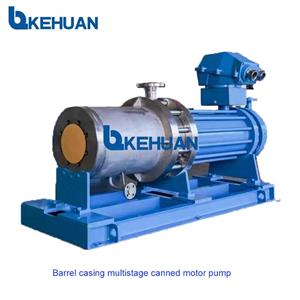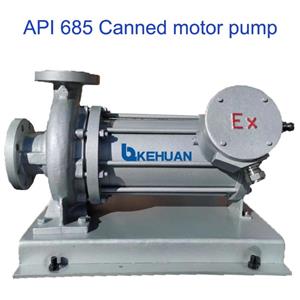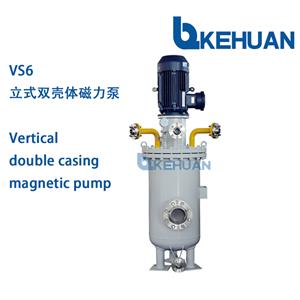Why Large Vertical Pumps Are Vulnerable to Dynamic Excitations & Vibration
Vertical pumps have been used in a wide range of applications and sizes. They have been employed for different liquids in many different services. Large vertical pumps can be used in critical services such as large cooling pumps, large seawater pumping systems, large groundwater/irrigation systems and more. Here are practical aspects and commonly reported problems of large vertical pumps to consider, such as vibration issues and dynamic excitations among others.
Dynamics & Vibration
Large vertical pumps usually have a flexible casing and structure with different excitation frequencies located relatively close to natural frequencies. As such, they are susceptible to resonant vibration and high vibration during operation. In-depth vibration studies and verifications are needed for such pumps.
In many vertical pumps, the dynamic performance and vibration level would be rather sensitive to changes to the pump or its characteristics/operation. These changes would include alignment, the balance situation, installation details, maintenance works, liquid level, load, etc. In other words, a resonant vibration might occur during operating situations that differ from normal operation (alternative operating cases such as different part-load operations, different liquid levels, etc). Another critical point is the ability for site rebalancing of the rotor assembly of such pumps. This is usually needed on-site during commissioning, operation or maintenance.
test-equipped ones at the shop. This is a difficult task. Theoretically, some complex mathematical models might be used to evaluate the effect of the foundation condition on the dynamic characteristics of vertical pumps. However, this is often challenging.
In addition to the foundation condition, the flow through the piping is known to have an influence on the vibration dynamics. Therefore, this can be another source of performance difference between the shop and site. Flow-induced vibrations have been experienced in some cases.
Vibration of Topside
Nearly all vertical pump vibration problems (except submersible pumps) have been reported as the vibration of the electric motor or topside of the pump—regardless of the type of vibration. This occurs because the head (topside) and electric motor driver are the only parts observed by an operator, and since the electric motor top is usually at the extremity, it exhibits the largest vibration amplitude. Vibrations below the pump base usually attract less attention. Often, on many vertical pumps, below base and above base vibrations are somehow isolated from each other by their stiff base configurations or similar arrangements. Usually, the maximum of the vibration is at the top of the electric motor driver, with amplitudes decreasing at the electric motor base. Sometimes a discharge piping is vibrating more than the pump. Picturing the high amplitude locations, and how the pump is vibrating, aids in understanding the causes of high vibration incidents and solving the problem.
Record Vibration at Shutdown & Startup
A good observation to obtain useful data in case of a set of high vibration measurements is to slow down the electric motor or record data during shutdown and observe how this changes the vibration. If the vibration reduces gradually, it is a sign that unbalance, misalignment, bent shafting or something similar is the cause. If the vibration decreases immediately with the electrical power shut off, the cause is usually electrical imbalance in the electric motor. If the vibration disappears with only a small speed change, then the cause is probably a resonance problem. When a pump shudders in slowdown, the cause is passage through a resonance frequency. Similar data might be extracted from the vibration at startup. However, the case of shutdown is usually more useful. It is recommended to analyze data from both shutdown and startup.
With the pump shut down, the shaft should be rotated by hand to see the behavior. If it is hard to rotate, the cause could be misalignment, bad fit or a bent shaft. However, an easily rotated shaft does not eliminate these causes, since small and flexible shafts can bend readily without load imposed on the bearings.
Inaccurate & Oversimplified Model/Analysis
An accurate finite element (FE) model was created with all the required details. The bowl assembly and all column piping details were modeled including the liquid in and around the piping, the bearing spider assemblies, the line-shaft plus its couplings, etc.
The FE modal analysis showed that there was a resonance for the first bending mode of the shaft. In other words, the natural frequency of the line-shaft first bending mode was predicted to be almost exactly at the pump running frequency. This natural frequency had drifted well below the value predicted by the manufacturer. The reason was the flexible support provided to the shaft by the long column piping. The manufacturer provided a dynamic study, but because the model created by the manufacturer was simpler, inaccurate and stiffer than actuality, the predicated natural frequency was higher and it did not show any resonance. This problem could not be predicted without the inclusion of the base and column piping flexibility in the accurate model.




